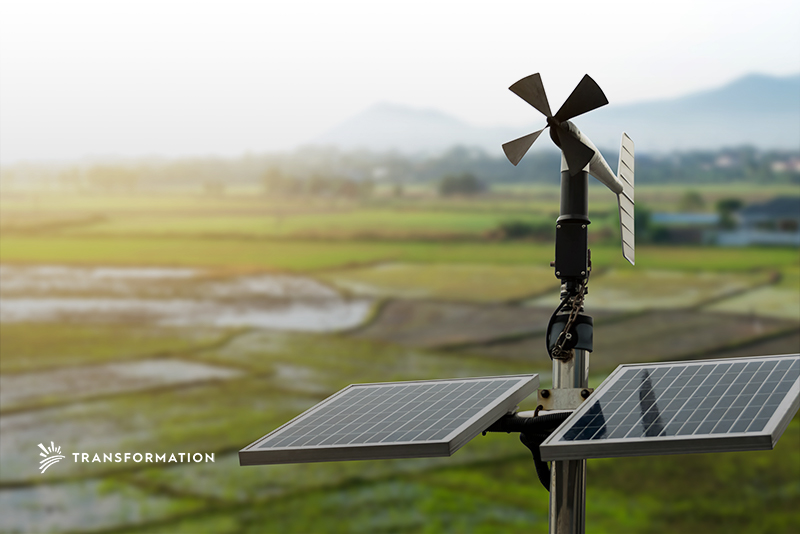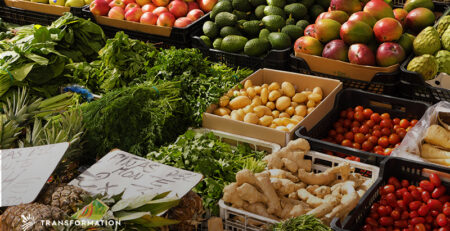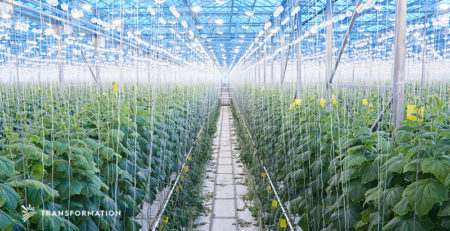Climate-Smart Agriculture & Landscapes: Secret Ingredients for Better Food Production
To change the narrative and build a resilient future for people and the planet, investing in climate-smart agriculture is crucial. But what is climate-smart agriculture, and why do we need it?
Not only does agriculture contribute to climate change, but agricultural yields are threatened by climate-change extremes. Climate-land interactions impact all regions of the world differently but equally jeopardize food security. Human-caused warming will expose some regions to unprecedented temperature and rainfall extremes, altering basic ecosystem structures and functioning. Climate change will also increase the risk and severity of wildfires in many other regions of the world. Whether climate change increases rainfall in some areas or wildfires in others, our current global agricultural system is not resilient in the face of such extremes.
Climate change is already decreasing agricultural yields and threatening food security. Variations of climate extremes have reduced global yields of maize by 3.8% and wheat by 5.5%. These reductions in productivity foreshadow increased food insecurity, poverty, and disrupted markets. Adding another layer, the growing global population demands increased agricultural productivity and growth.
What is Climate-Smart Agriculture?
According to the World Bank, climate-smart agriculture (CSA) is a holistic path to sustainable landscape management, including cropland, forests, livestock, and fisheries. This approach addresses the interconnected challenges of global food security and climate change extremes. CSA works to obtain the following three results:
- Increased productivity: produce higher quantity and quality to food to improve food security and economic security for land stewards
- Enhanced resilience: reduce vulnerability to climate risks and shocks (drought, pests), improve adaptation for long-terms stressors (shorter growing seasons, unpredictable weather extremes)
- Reduced emissions: spare land from deforestation, implement carbon sequestering practices, decrease emissions for each food calorie produced
Climate-smart agriculture draws on traditional knowledge, existing technologies, and current principles of sustainable agriculture. In this way, it focuses on the desired climate and social outcomes instead of solely focusing on the implementation of specific practices.
There are many different sustainable agriculture practices or methods, including regenerative agriculture, agroforestry, ocean farming, and sustainable livestock management. The agricultural product and specific region largely determine what model of sustainable agriculture a stakeholder will adopt. However, these diverse methodologies could all fall under the category of CSA if their implementation achieved the above three results. Increased agricultural productivity, enhanced resilience, and reduced emissions would have a profoundly positive impact on global food security and climate change mitigation and adaptation.
Financial Potential
Even though there has been a growing international and national movement to implement and scale up climate-smart agriculture, financing options are still limited. However, these options are increasing as various global studies continue to prove that the cost of maintaining business-as-usual far outweighs the cost of climate change. Research demonstrates that the total cost of climate change would be about 3.6% of global GDP in 2100 unless widespread adaptation and mitigation efforts are implemented.
To support the effective implementation of climate-smart agriculture, investors can play a crucial role in the following areas:
- Link climate finance to traditional sources of agricultural finance
- Increase total investment in CSA practices and businesses
- Invest in climate change assessment tools to build evidence to support effective decision-making
Global climate finance in agriculture can remove barriers for implementation, support scaling-up, and make space for CSA in mainstream sustainable development plans. Investing in CSA is a catch-all way to comprehensively support all agricultural and landscape management practices that address climate change and its detrimental impacts.
Conclusions
As a growing population and changing dietary preferences drive the demand for food and land expansion, climate-smart agriculture is a holistic solution for food security and agricultural adaptation in the face of climate change extremes. The widespread implementation of climate smart-agriculture would be a triple win of increased productivity, crop resilience, and reducing greenhouse gas emissions. Investors are necessary to close the gaps in financing a better future for agriculture.





Leave a Reply